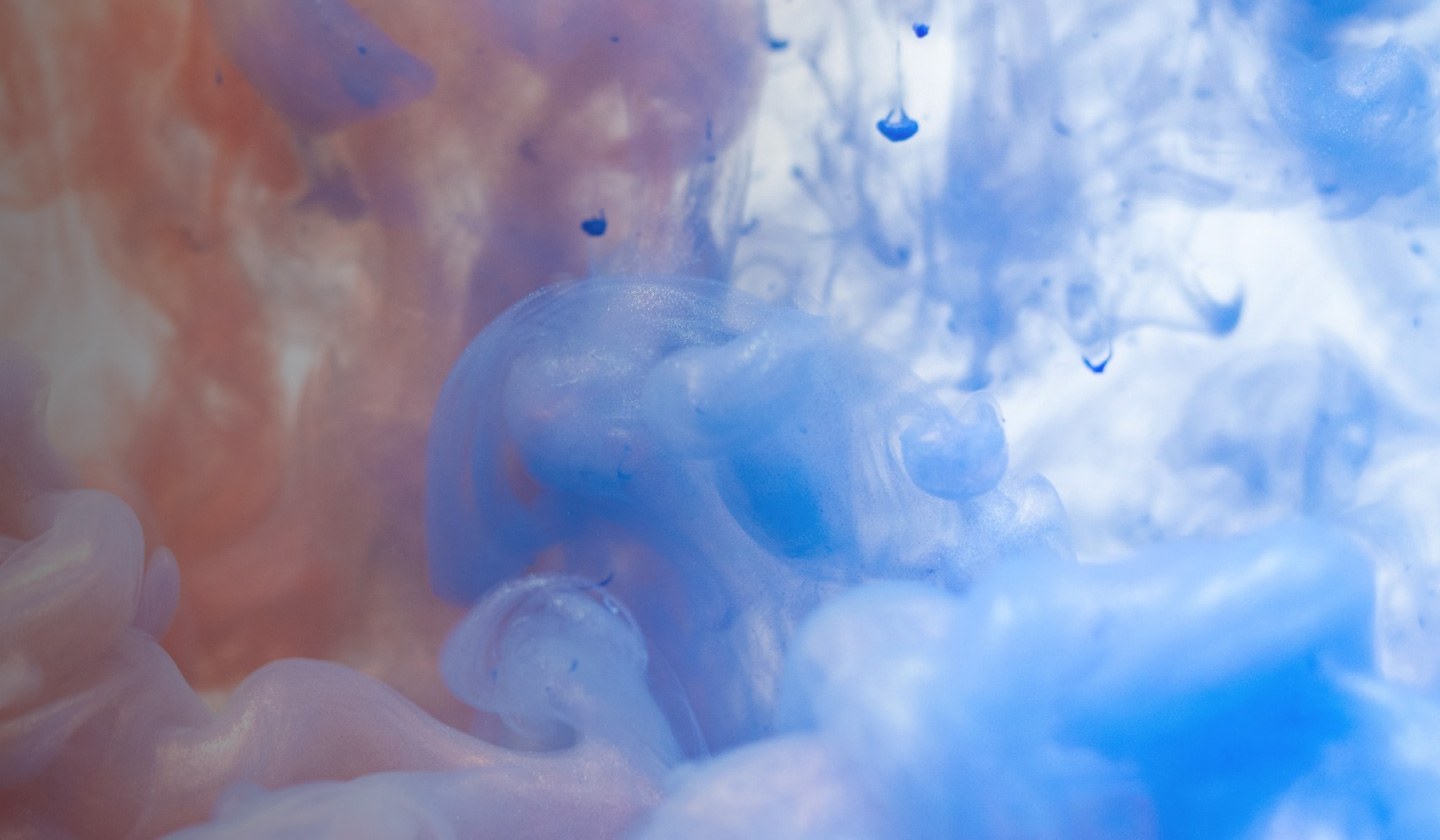Dalla famosa introduzione negli anni '80 da parte di Fuji e Kodak, una fotocamera usa e getta ha occupato molte occasioni di scatto fotografico:
- momenti romantici durante il ricevimento di nozze;
- avventure di viaggio;
- feste di compleanno;
- altri straordinari momenti di felicità.
A causa dei principi di funzionamento primitivi, molti utenti considerano la fotocamera usa e getta più economica come un mezzo per scattare foto veloci. Sebbene alcuni analoghi abbiano effetti digitali, queste fotocamere si riferiscono ad apparecchiature di acquisizione economiche che piacciono ai procedimenti fotografici. Inoltre, l'utilizzo permanente richiede messa a fuoco manuale e opzioni flash e deve gestire manipolazioni di fotoritocco. Tuttavia, un assortimento all'avanguardia di tipi monouso non riduce il tuo interesse per foto veloci e di qualità. A causa dei principi di funzionamento primitivi, molti utenti considerano la fotocamera usa e getta più economica come un mezzo per scattare foto veloci. Sebbene alcuni analoghi abbiano effetti digitali, queste fotocamere si riferiscono ad apparecchiature di acquisizione economiche che piacciono ai procedimenti fotografici. Inoltre, l'utilizzo permanente richiede messa a fuoco manuale e opzioni flash e deve gestire manipolazioni di fotoritocco. Tuttavia, un assortimento all’avanguardia di tipi monouso non riduce il tuo interesse per foto veloci e di qualità.
In questa guida, il nostro team di Portfoliobox ha raccolto tutto ciò che dovresti sapere sulle fotocamere usa e getta e i segreti della loro prolungata popolarità:
- Cos'è una fotocamera monouso?
- Perché le fotocamere usa e getta tornano?
- Le fotocamere usa e getta scattano buone foto?
- Una breve storia delle fotocamere usa e getta
- Come funzionano le fotocamere usa e getta?
- Le 5 migliori fotocamere usa e getta
- Fujifilm Quick Snap
- Kodak FunSaver
- Ilford XP2
- Lomografia in bianco e nero
- Kodak Acqua e Sport Impermeabile
Cos'è una fotocamera monouso?

Una fotocamera usa e getta è progettata per catturare foto veloci utilizzando un concetto di assemblaggio primitivo. Il processo di ripresa fotografica si basa su un sofisticato approccio passo-passo:
- concentrati sul grande momento che desideri cogliere;
- premere un pulsante di avvolgimento;
- utilizzare effetti flash, se necessario;
- controllare l'utilizzo della dimensione della pellicola;
- elaborare le immagini scattate fuori sede.
Potresti rimanere sorpreso, ma una fotocamera monouso non riguarda i tempi antichi dello sviluppo della fotografia digitale. Potresti qualificarti per diversi tipi di fotocamere flessibili:
- Classiche fotocamere usa e getta . La custodia in plastica di questa fotocamera semplifica il processo di esplorazione e la rende meno resistente ai danni accidentali. Il modello di lavoro è facile da sfruttare grazie alle numerose funzioni e caratteristiche disponibili. Per questi dispositivi fotografici non sono previsti zoom e impostazioni avanzate;
- Fotocamere usa e getta impermeabili . Oltre alle opzioni disponibili per gli esemplari classici, queste fotocamere usa e getta hanno un rivestimento esterno in plastica per scattare ottime foto sott'acqua;
- Fotocamere digitali usa e getta . Le opportunità digitali integrate in alcuni modelli di fotocamere istantanee si riferiscono ai bisogni primari degli utenti casuali, ovvero scattare foto e modificarle grazie alla connessione con smartphone o laptop.
Perché le fotocamere usa e getta tornano?
Un cliente normale potrebbe notare la popolarità stabile delle fotocamere monouso osservando l'evoluzione delle apparecchiature per l'acquisizione di foto e le rispettive tendenze del mercato. Dal momento in cui sono stati introdotti sui mercati i primi dispositivi per la cattura di foto istantanee, tutti ne hanno apprezzato i vantaggi unici, tra cui:
- risultati rapidi ed economici . Per goderti le foto di matrimoni o compleanni o ricordare belle emozioni dopo vacanze emozionanti, devi aspettare qualche settimana e rivedere le foto professionali. Con una fotocamera monouso, potresti ricevere le tue fotografie nella farmacia più vicina o in un altro servizio di elaborazione rapida delle foto;
- risparmia con l'assortimento conveniente . Tipi particolari di fotocamera dispongono di funzioni aggiuntive relative alla capacità di autoelaborazione delle foto o opzioni di anteprima per leggere correzioni delle pose o dei paesaggi fotografati;
- infiniti classici in bianco e nero . Queste fotocamere sono progettate per supportare entrambe le immagini da colorare. Tuttavia, la maggior parte dei dispositivi fornisce foto in bianco e nero uniche associate a varianti archiviate per adolescenti e momenti nostalgici per adulti.
Le fotocamere usa e getta scattano buone foto?
Le fotocamere usa e getta aggiornate impressionano gli utenti con immagini brillanti grazie alle lenti in plastica e ai flash intensi. Anche i fotografi professionisti evidenziano le caratteristiche uniche delle foto istantanee, tra cui:
- scatti ad alto contrasto con colori saturi;
- esperimenti con gli angoli senza catturare i fallimenti;
- immagini eccellenti perché le disposizioni del flash eliminano gli effetti di luce intensa;
- capolavori artistici dovuti a strati armonici e opportunità di catturare scatti con effetti di illusione ottica attraverso diversi mezzi. Pertanto, potresti ottenere immagini quasi professionali scattate attraverso un bicchiere d'acqua o uno specchio trasparente di doppia dimensione per ottenere effetti di volume.
Sebbene lo zoom e le funzionalità avanzate non siano operative per le acquisizioni a lunga distanza, questa debolezza non impedisce ai dilettanti di creare illustrazioni simili a quelle di uno studio.
Una breve storia delle fotocamere usa e getta
Se desideri scoprire le trasformazioni operative delle fotocamere usa e getta, potresti scoprire alcuni fatti curiosi e altre informazioni correlate alla storia della fotografia istantanea. Pertanto, è possibile dividere le modifiche retrospettive del modello per particolari decenni di innovazioni tecnologiche:
- Anni '50 . Nel 1949 Photo PAC inventò la prima macchina fotografica in cartone capace di effettuare fino a otto esposizioni. Pertanto, il nuovo decennio ha aperto il mondo a nuove opportunità fotografiche, nonostante i vari svantaggi e i prezzi elevati dei prodotti. Pertanto, gli ingegneri hanno trovato un modo per rendere il processo di ripresa fotografica accessibile alla maggior parte della popolazione e hanno semplificato il processo di assemblaggio senza costosi meccanismi di trasporto della pellicola;
- Anni '60 . La società francese “FEX” ha offerto una macchina fotografica usa e getta in bachelite in grado di scattare 12 foto. Le dimensioni delle immagini avrebbero voluto essere migliori. Tuttavia, le dimensioni di 4x4 cm erano perfette per i documenti di identità;
- 1970-80 . Questo periodo è considerato l'apice della popolarità delle fotocamere usa e getta. Fuji e Kodak sono diventati concorrenti in questa nicchia di mercato e hanno presentato i classici dispositivi per la ripresa fotografica istantanea con una gamma standard di funzionalità disponibili;
- Anni '90 . Konica, Canon e Nikon si sono aggiunti all'elenco dei noti produttori e hanno promosso i miglioramenti delle tecnologie delle fotocamere usa e getta. La maggior parte dei modelli monouso ha migliorato le proprie funzioni durante questo periodo e ha offerto leggere opzioni di zoom, cascate ed effetti panoramici. Il flashing incorporato offre agli utenti informazioni utili per scattare le foto migliori;
- Anni 2000 - in corso. Le fotocamere digitali multifunzionali professionali non potevano escludere gli analoghi da smaltire dal mercato della fotografia. Al contrario, il progresso dell’innovazione ha ottimizzato le capacità di esplorazione delle fotocamere usa e getta. Ora potresti trovare attrezzature fotografiche digitali usa e getta approvate per le attività di cattura subacquea.
Come funzionano le fotocamere usa e getta?

Una fotocamera usa e getta è progettata per scopi monouso e per l'elaborazione rapida delle foto per ridurre tempo e risorse finanziarie. In pratica potreste scattare una foto in base alla capacità della pellicola e smaltire l'apparecchio utilizzato.
Per chiarire il principio di funzionamento della tua macchina fotografica usa e getta, devi conoscere brevi linee guida del suo lavoro generale:
- principio del monouso . Per essere più precisi nella spiegazione del lavoro con la macchina fotografica usa e getta, potresti ricordare la regola in tre passaggi: utilizzare il rullino disponibile, elaborare i servizi fotografici e buttare via l'attrezzatura soggetta a usura. In altre parole, i produttori di fotocamere istantanee le hanno rese più economiche rispetto alle pellicole o ai campioni digitali per soddisfare le esigenze di acquisizione rapida;
- principio "inquadra e scatta" . Le fotocamere usa e getta catturano qualsiasi momento straordinario premendo un pulsante di ricarica rapida per ricevere immagini ben elaborate. Il risultato sarebbe migliore se si premesse il pulsante del flash in mano e si regolasse l'acquisizione delle immagini con una piccola schermata di anteprima. Pertanto, è necessario utilizzare attentamente ogni pellicola girata per raccogliere solo le esposizioni più preziose;
- principio di alta sostenibilità . Le fotocamere all'avanguardia sono disponibili per qualsiasi circostanza di ripresa estrema. Non dovresti preoccuparti delle capacità prestazionali della fotocamera se decidi di scattare una foto durante la pioggia o sul fondo della piscina;
- principio rispettoso dell'ambiente . Le aziende che producono fotocamere usa e getta preferiscono solo materiali approvati per il riciclaggio. Inoltre, le fotocamere monouso non necessitano di ricarica della batteria e, pertanto, si qualificano come efficienti dal punto di vista energetico.
Le 5 migliori fotocamere usa e getta
Qui puoi conoscere i prodotti inquadra e scatta più cliccabili disponibili sul mercato della fotografia. Ogni campione vale la pena, rendendo il processo di scatto fotografico incredibile ed emozionante.
Fujifilm Quick Snap

La pellicola da 37 lunghezze incorporata nel cartone usa e getta della fotocamera genera 27 buone immagini. Inoltre, l'opzione flash assemblato fornisce una grafica straordinaria senza effetti negativi quando desideri catturare uno splendido paesaggio in una giornata soleggiata. Oltre alle adeguate capacità prestazionali del flash, hai la garanzia di catturare immagini con uno spettro di 3 metri anche se l'orario di ripresa rispetta il crepuscolo o la mezzanotte.
Questa fotocamera bilancia armonicamente i parametri di prezzo e qualità, il che giustifica la tua scelta ragionevole per quanto riguarda i dispositivi fotografici monouso.
Acquistando Fujifilm Quick Snap, puoi beneficiare delle seguenti caratteristiche:
- Tipologia : monouso;
- Formato pellicola : 35 mm;
- Tipo di pellicola : colore;
- Risposta ISO : ISO400;
- Numero di esposizioni : 27;
- Obiettivi : 32 mm f/10;
- Mirino : visualizzazione diretta;
- Modalità : automatica.
Kodak FunSaver

Questa fotocamera usa e getta offre effetti flash fenomenali e capacità di ripresa migliorate per elaborare immagini colorate. Le foto catturate da Kodak FunSaver contribuiscono quasi alle qualità digitali. I criteri vantaggiosi di questa fotocamera istantanea sono l'espansione del numero di esposizioni fino a 39.
I parametri generali di questo campione includono:
- Tipologia : monouso;
- Formato pellicola : 35 mm;
- Tipo di pellicola : colore;
- Risposta ISO : ISO400 o 800;
- Numero di esposizioni : 39/27;
- Obiettivi : 30 mm f/10;
- Mirino : visualizzazione diretta;
- Modalità : automatica.
Ilford XP2

Una tecnologia facile da usare è disponibile per l'elaborazione delle foto in qualsiasi servizio. Ilford XP2 offre una visualizzazione con contrasto efficace sviluppata dal processo C41 e funzionalità integrate nel flash per i classici divertimenti fotografici. Inoltre, ulteriori opportunità flash espandono i parametri di messa a fuoco della fotocamera e le dimensioni dello spettro. Pertanto, questa fotocamera usa e getta garantisce la qualità delle immagini ricevute in conformità con il tipo di pellicola a colori.
Inoltre si possono individuare gli altri aspetti tecnici:
- Tipologia : monouso;
- Formato pellicola : 35 mm;
- Tipo di pellicola : bianco e nero;
- Risposta ISO : ISO400;
- Numero di esposizioni : 27;
- Obiettivi : 30 mm f/9,5;
- Mirino : visualizzazione diretta;
- Modalità : automatica.
Lomografia in bianco e nero

Un re delle foto di archivio, Lomography Black & White, è un buon investimento nel mercato delle fotocamere usa e getta. Il grande vantaggio è che puoi sfruttare questo dispositivo per scattare foto più volte se hai abbastanza competenze per sostituire il rullino utilizzato. Principianti e professionisti sottolineano gli incredibili risultati di questa fotocamera monouso, come lo spettro di messa a fuoco e la gamma di contrasto.
Oltre ai suoi principali vantaggi, puoi confrontare le sue opzioni tecnologiche con le migliori fotocamere usa e getta sopra elencate:
- Tipologia : monouso;
- Formato pellicola : 35 mm
- Tipo di pellicola : bianco e nero;
- Risposta ISO : ISO400;
- Numero di esposizioni : 36;
- Obiettivi : 31mm f/9;
- Mirino : visualizzazione diretta;
- Modalità : automatica.
Impermeabile Kodak per acqua e sport

L'ultimo dispositivo per catturare foto assomiglia a un giocattolo infantile. Tuttavia, il design sofisticato non deteriora i parametri tecnici di questo prodotto Kodak. La capacità di questa fotocamera usa e getta di scattare foto subacquee spiega l'assenza del flash. La buona profondità arriva fino a 15 metri. Inoltre, questa custodia per fotocamera è resistente ai danni e ad alte prestazioni grazie alla risposta ISO integrata.
Per riassumere le caratteristiche impermeabili di Kodak Water & Sport, è possibile familiarizzare con i seguenti criteri:
- Tipologia : monouso;
- Formato pellicola : 35 mm;
- Tipo di pellicola : colore;
- Risposta ISO: ISO800;
- Numero di esposizioni : 27;
- Obiettivi : 35 mm f/50;
- Mirino : visualizzazione diretta;
- Modalità : automatica.
Domande frequenti
Qual è lo scopo di una macchina fotografica usa e getta?
Una fotocamera usa e getta ha lo scopo di scattare foto ad alto contrasto con colori straordinari grazie alle buone capacità di messa a fuoco, inclusi flash, zoom primitivo e funzionalità avanzate. I materiali economici delle custodie per fotocamere, come la plastica riciclabile, aumentano la loro popolarità nel mercato della fotografia.
Quante foto scatta una macchina fotografica usa e getta?
Il numero di immagini catturate con una fotocamera usa e getta dipende dalla dimensione del rullino incorporato. Di solito, la maggior parte dei campioni genera 27 scatti. Allo stesso tempo, potresti trovare fotocamere con 36 esposizioni.
Le fotocamere usa e getta possono scadere?
Le fotocamere usa e getta possono scadere in base agli standard di durata dei materiali utilizzati e al breve periodo di ammortamento. In particolare, le fotocamere potrebbero essere smaltite una volta utilizzate tutte le esposizioni ed elaborate le foto.
È possibile scaricare immagini da una fotocamera usa e getta?
Le fotocamere usa e getta non consentono di scaricare immagini sul computer tramite schede di memoria. In pratica, la conversione delle immagini catturate nelle loro versioni digitali dovrebbe essere manuale. Una volta ricevute le foto stampate, puoi scansionarle e inviare copie nella cartella specifica del computer.
Le macchine fotografiche usa e getta fanno buone foto?
Una fotocamera monouso dimostra buoni risultati fotografici pari agli analoghi digitali o su pellicola. Foto panoramiche con angoli sperimentali, colori straordinari e gamma di contrasto elevata sono alcuni vantaggi elencati che potresti esplorare con le capacità della tua fotocamera usa e getta.
Come mettono a fuoco le fotocamere usa e getta?
Il fuoco di una fotocamera usa e getta può variare da 8 a 11. L'apertura fissa dipende da parametri qualitativi e quantitativi incorporati previsti dai produttori appropriati. In particolare, gli indicatori di messa a fuoco si occupano direttamente delle funzionalità flash integrate.
Le fotocamere usa e getta vengono fornite con la pellicola?
Le fotocamere usa e getta hanno un rullino di pellicola standard con capacità prestazionali fino a 36 esposizioni. Dopo il loro utilizzo, è probabile che le fotocamere perdano il loro valore pratico. Allo stesso tempo, alcuni dispositivi sostituiscono le pellicole usate e svolgono ripetutamente i loro compiti.






